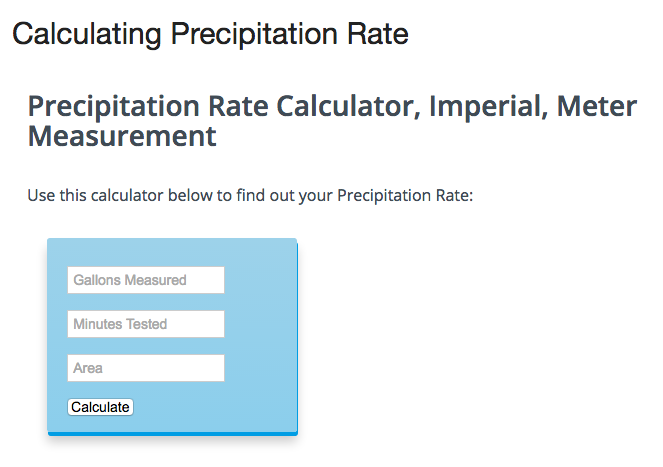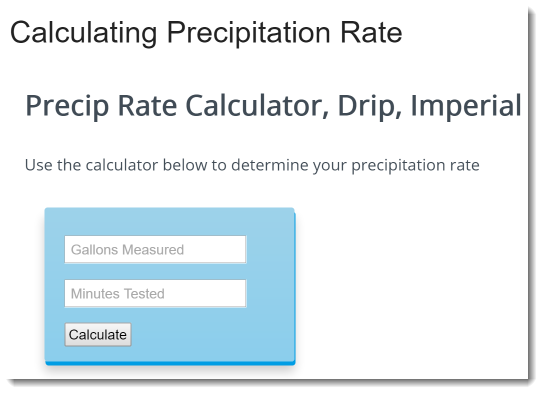a drip system is a system that is meant to be tweaked by hardware adjustments, so by definition, you should set your drip to one/two hour(s) and augment water applied by adding/removing emitters where needed as it is a heterogeneous system.
you would do this with a fixed schedule. now if you want to use a flex schedule, aka tracking moisture loss, volume becomes an underpinning of the algorithm. without volume you have no reference point.
at risk of sounding callous, this statement is false. area is taken into account as they are very explicit as the diameter of the drip ring. its just casually mentioned as the canopy diameter. so to continue on this thread, a tree with 1 foot diameter needs 1.5 gallons an hour, this is roughly 5 square feet so that is your area to plug into the formula with 1 gallon an hour emitter, now we can compute a pr. i hope you can see how this becomes a moving target.
so ill take the pepsi challenge any day with the horticulturalist that says area is not important…they do not either understand what they are saying or have just oversimplified it in their head.
the real question that nobody answers is, what does gallons an hour mean without area? it says nothing about how spread out that water will be, thus we can make no determination as to how deep the water has traveled.
i can put a 1 gallon an hour emitter on a tree 10 feet away and run my irrigation for 10 hours. the tree is still going to burn up as the water is not being distributed evenly over the root canopy and depending on the soil, will just spread out very shallow and transpire away in a day.
its an extremely hard problem to solve and everybody keeps over simplifying the situation.
just one last example on how just gallons an hour is misleading. if i put 10 1 gallon an hour emitters in a ring that is 5 foot in diameter i will end up watering to a depth of .07 inches. if i put 2 5 gallon an hour emitters on a ring 2 foot in diameter i end up watering to a depth of .2 inches. same gallons an hour, much different depth of watering thus much quicker loss of water.
if someone wants simple, then fire up a fixed for one hour, add up all the emitters gph, divide by number of emitters, plug into pr formula, create a custom head, rinse repeat every time you change your system.









